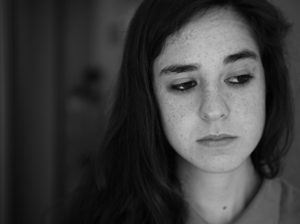
Improving access to psychological therapies for children and adolescents is vital. This review aims to evaluate brief, intensive and concentrated (BIC) cognitive behavioural therapy, adapted from “standard” CBT treatments for anxiety disorders in young people.
Currently, “standard” 11-18 session Cognitive Behavioural Therapy (CBT) is the only treatment with an adequate evidence base for effectively treating anxiety disorders in children and adolescents (Reynolds et al, 2012).
The authors aim here is to compare BIC treatments to the “standard” CBT treatment and see if there are similar outcomes. In order to do this, Öst & Ollendick carefully define BIC treatments:
- Brief: a total number of sessions at least 50% or less compared to standard CBT, (it could be carried out over the same number of weeks, or a shorter period of time)
- Intensive: both total number of sessions are 50% or less and the duration of treatment is greatly reduced compared to standard
- Concentrated: the total number of sessions is the same as “standard” CBT but completed in less time, e.g. daily sessions over 3 weeks.
BIC treatments must not be confused with ‘low intensity’ CBT treatments, which aren’t included in this review. There is no agreed universal definition for ‘low-intensity’ interventions, but there are several common characteristics. The majority are based on the principles of CBT, they are mainly appropriate for mild to moderate psychological difficulties and are often delivered by nonspecialist clinicians (Bennet-Levy & Farrand, 2010). Low-intensity interventions are also often supported by professionals using the telephone, email or other computer-based CBT programmes.

Brief, Intensive & Concentrated treatment means fewer sessions than standard CBT, delivered over a shorter time period, e.g. more than 1 session each week.
Why is improving access to psychological therapies so important for young people with anxiety disorders?
Anxiety disorders affect 10% of children and 20% of adolescents at any one time. These disorders frequently persist into adulthood and are often associated with significant difficulties across the life span (e.g., major depression, substance abuse) (Woodward & Fergusson, 2001).
However, despite the existence of evidence-based interventions, the majority of young people do not access treatment. Young people face substantial barriers to seeking and receiving treatment; stigma, infrequent contact with health services, waiting times, lack of knowledge about mental health and few sufficiently trained mental health professionals.
Given the sound underlying therapeutic principles and evidence-base of CBT, it appears to be an ideal therapy to adapt and develop brief, intensive and concentrated (BIC) approaches designed to reach more young people, be more efficient and more cost-effective.
This well-conducted meta-analysis aims to evaluate the effectiveness of brief, intensive and concentrated CBT treatments. This review provides initial support that BIC treatments are just as effective as “standard” CBT. However, it is important to consider:
- Are they appropriate for all anxiety disorders?
- Can they improve access for young people?
- Should BIC replace “standard” CBT?
- Who can deliver BIC treatments?

Anxiety disorders are common in young people, but the majority don’t receive any treatment.
Methods
The meta-analysis by Öst & Ollendick was based on a detailed and comprehensive literature review of 23 studies.
Randomised controlled trials (RCTs) were included if the treatments were at least one of brief, intensive and concentrated. Participants were a maximum age of 18 and diagnosed with an anxiety disorder according to DSM or ICD criteria.
19 studies demonstrated individual approaches, 4 studies were groups. Overall in the review, 7 interventions were defined as brief, 11 as intensive and 5 as concentrated. The methodological quality was evaluated between treatments demonstrating no significant difference and risk of bias was also calculated showing no significant effect.
Results
- Approaches were found to be acceptable to youth and their parents, only 6% declined and 2% dropped out
- BIC yielded very large effect sizes compared to wait list and placebo
- There was no significant difference between outcomes of BIC and standard length CBT
- Both the effects of BIC and standard CBT were maintained at follow up
- The type of disorder being treated was significant:
- Specific phobia & mixed anxiety yielded large significant effect sizes,
- Whereas PTSD, OCD, panic disorder, social anxiety disorder and separation anxiety disorder had smaller effect sizes
- Clinical psychologists yielded higher effect sizes than other mental health professionals.

This review found no significant difference between outcomes of BIC and standard length CBT.
Conclusions
These results provide exciting initial support for BIC interventions treating youth with various anxiety disorders. Highlighting the evolving delivery of mental health services outside of the traditional “therapy hour”.
Strengths and limitations
Strengths
BIC treatments were shown to be as effective as “standard” CBT both at the end of treatment and at follow-up. This evidence suggests that similar outcomes can be reached with either less contact with patients or a shorter duration of therapy. Therefore, people may miss out on less school, get back to living life to the full quickly and reach their potential.
BIC treatments have the potential to improve access to psychological therapies. This is essential to ensure that anxiety disorders aren’t left until they require specialist support.
Limitations
Thirteen studies examined exposure-based treatments for specific phobias demonstrating large effect sizes. However, smaller percentages examined other disorders such as PTSD, OCD, panic disorder, social anxiety disorder and separation anxiety disorder, and no studies examined generalised anxiety disorder. Therefore, the evidence for BIC treatments being suitable for specific phobias is strong. However, undoubtedly Öst & Ollendick note that more RCTs are needed for the latter anxiety disorders.
A barrier to young people accessing treatment is often a lack of trained CBT professionals to deliver therapy (Reardon et al., 2017). This number is limited due to high costs of training and employing the staff. The current research demonstrates that clinical psychologists yield higher effect sizes than other mental health professionals. Therefore, suggesting BIC treatments are more effective when delivered by experienced extensively trained practitioners. Consequently, access to BIC treatments relies on the availability of these highly trained professionals. This may mean that the impact on ‘improving access to evidence-based treatments’ is not significant as there remains a shortage of adequately qualified therapists.
Öst & Ollendick specifically chose to not include low intensity CBT interventions in this review. As stated above, a clear benefit of low-intensity interventions is the delivery by non-specialist practitioners. Recent advances in the development of low intensity CBT interventions delivered by parents and online appear to have the potential to further improve access to psychological therapies for young people. As a current Psychological Wellbeing Practitioner, I deliver the guided parent led CBT treatment for children and in my experience it appears to be a beneficial first line intervention, as previously evidenced (Creswell et al., 2017).
This review found that clinical psychologists yielded higher effect sizes than other mental health professionals, so BIC may not be the solution to our current long waiting lists.
Implications for practice
The authors suggest that it may be time to re-examine the standard delivery of 50-minute sessions that are spread out over 9-18 weeks and I agree with them. There are clearly various benefits of BIC treatments in terms of quick recovery. However, in order to increase access to psychological therapies, ‘low-intensity’ treatments are also needed that can be delivered by non-specialists.
In adult services a stepped care model has been implemented, utilising low-intensity CBT and more “standard” versions of CBT, demonstrating improved access to psychological therapies (Department of Health, 2012). A similar model is required for child and adolescent services, to help more young people access evidence-based psychological therapies and overcome their problems before requiring specialist care. The stepped care model should be self-correcting and clear communication is essential to deliver individual and joined up care. A recent evaluation of a stepped care approach to the treatment of anxiety disorders highlighted that stepped care appeared to produce similar outcomes to standard CBT but involved less therapist time (Rapee et al., 2017), highlighting the potential cost-effectiveness of this approach. BIC treatments, “standard” CBT and ‘low-intensity’ CBT may all have a place in this model.

Is it time to implement more stepped care approaches in child and adolescent services?
Links
Primary paper
Öst, L. G., & Ollendick, T. H. (2017). Brief, intensive and concentrated cognitive behavioral treatments for anxiety disorders in children: A systematic review and meta-analysis. Behaviour Research and Therapy, 97, 134-145. [PubMed abstract]
Other references
Bennett-Levy, J., & Farrand, P. (2010). Low intensity CBT models and conceptual underpinnings. In J. Bennett-Levy, et al. (eds.). Oxford guide to low intensity CBT interventions. Oxford: Oxford University Press
Health GBDo. Health and Social Care Act 2012: Chapter 7, Explanatory Notes: The Stationery Office, 2012.
Creswell, C., Violato, M., Fairbanks, H., White, E., Parkinson, M., Abitabile, G., … & Cooper, P. J. (2017). Clinical outcomes and cost-effectiveness of brief guided parent-delivered cognitive behavioural therapy and solution-focused brief therapy for treatment of childhood anxiety disorders: a randomised controlled trial. The Lancet Psychiatry.
Reardon, T., Harvey, K., Baranowska, M., O’Brien, D., Smith, L., & Creswell, C. (2017). What do parents perceive are the barriers and facilitators to accessing psychological treatment for mental health problems in children and adolescents? A systematic review of qualitative and quantitative studies. European child & adolescent psychiatry, 1-25.
Reynolds, S., Wilson, C., Austin, J., & Hooper, L. (2012). Effects of psychotherapy for anxiety in children and adolescents: A meta-analytic review. Clinical psychology review, 32(4), 251-262.
Woodward, L. J., & Fergusson, D. M. (2001). Life course outcomes of young people with anxiety disorders in adolescence. Journal of the American Academy of Child & Adolescent Psychiatry, 40(9), 1086-1093.
Photo credits
Photo by Pablo Varela on Unsplash

“Approaches were found to be acceptable to youth and their parents, only 6% declined and 2% dropped out”
This sounds remarkably low – any idea how this compares to TAU / standard CBT?
Thank you for your question! This study reported that for standard CBT the mean attrition (participants who had at least one session but didn’t complete treatment) was 6.5%, which is not significantly different to BIC treatments. However, I can’t find data about the Declining rate in comparison to standard CBT / TAU. Swift & Greenberg (2012) conducted a meta-analysis into adult psychotherapy and found that 1 in 5 clients dropped out of therapy. Also, suggesting that attrition increased with the length of therapy and younger clients were even more likely to dropout. As far as I’m aware there hasn’t been a specific meta-analysis looking at attrition and declining rates for young people for standard CBT / TAU. If anyone knows of one could you please share it with us? I hope this helps at least a little bit!